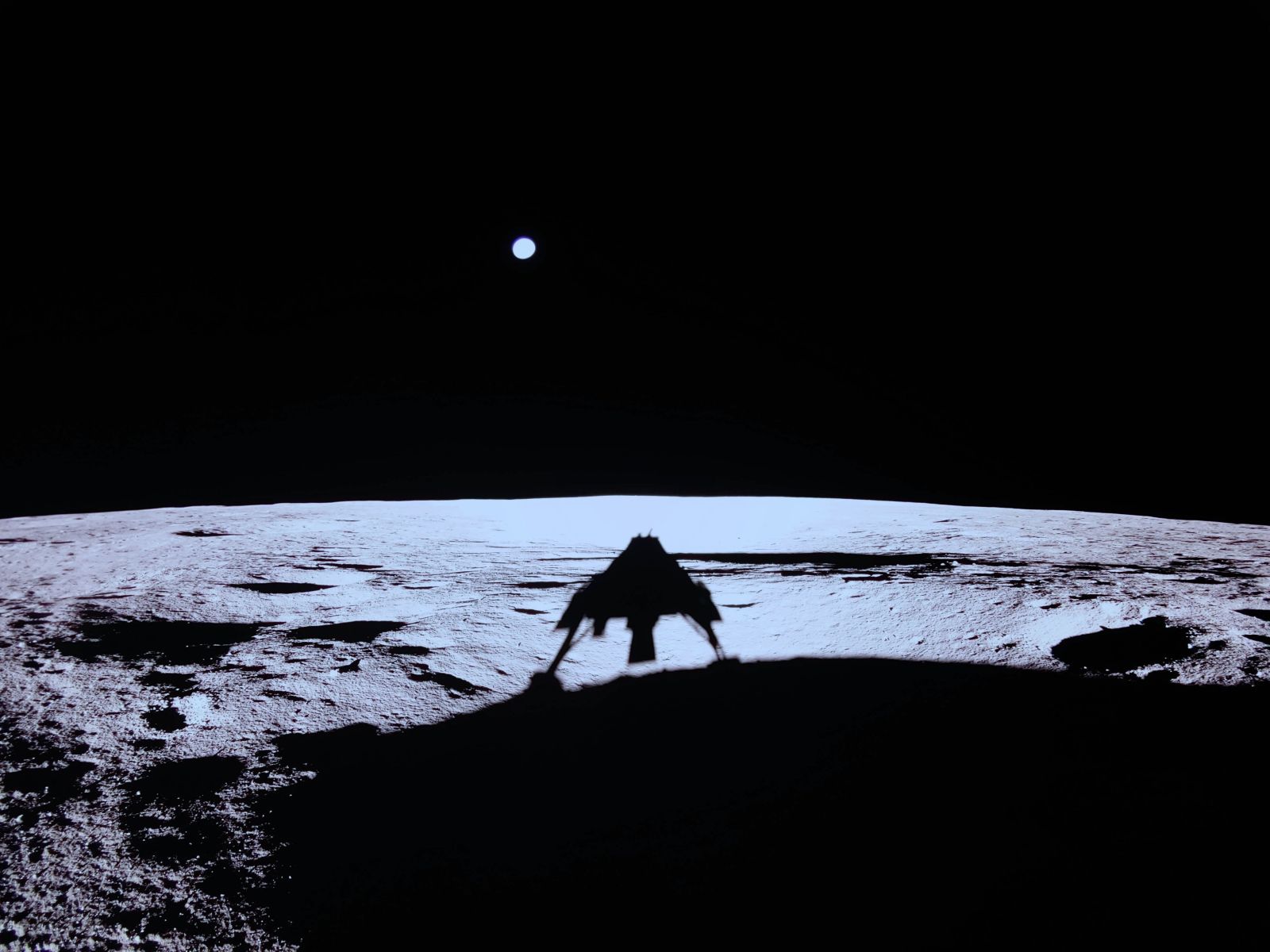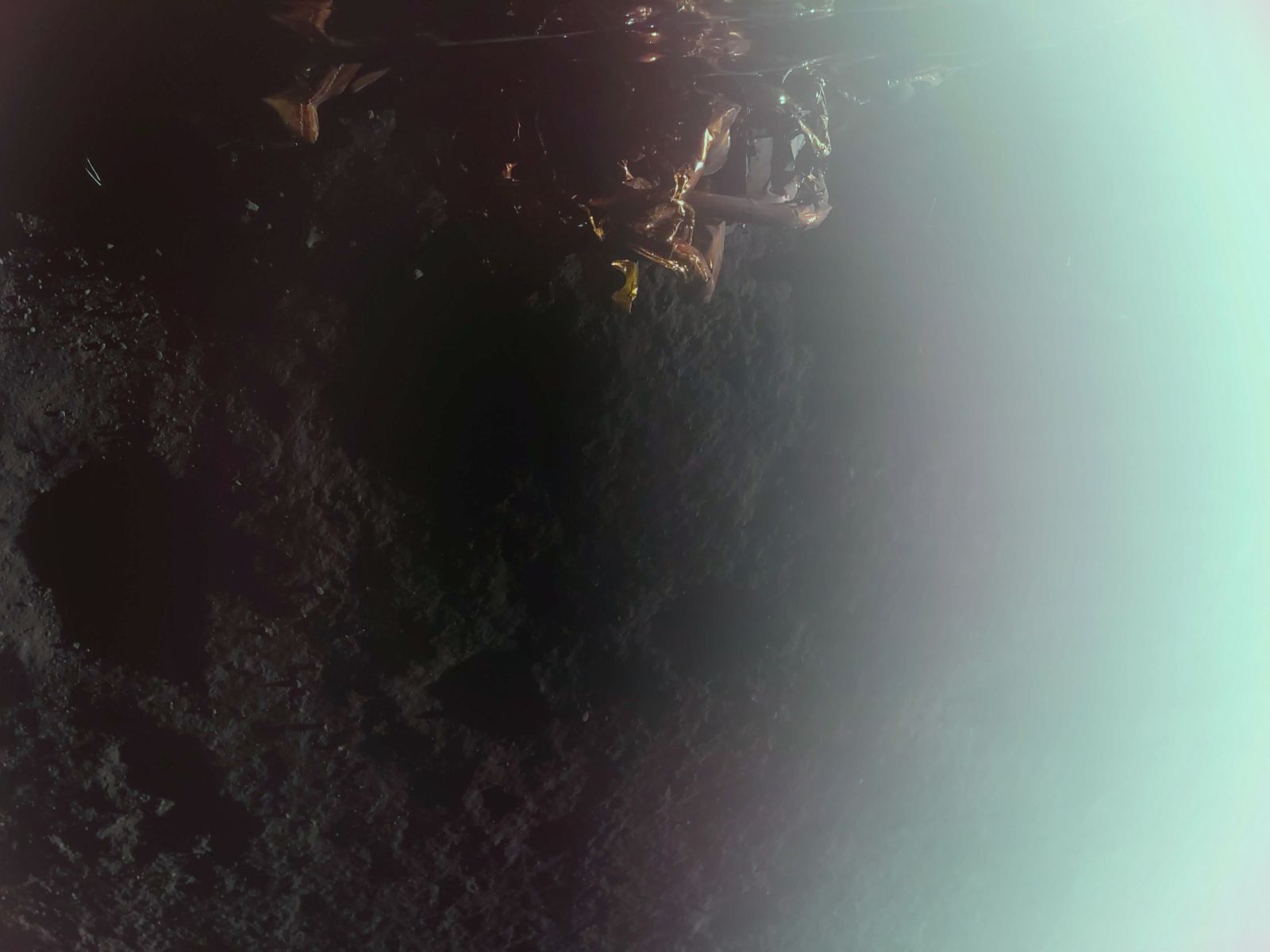Follow us on Google News (click on ☆)

The shadow of Blue Ghost seen on the lunar surface, with Earth in the background.
The Blue Ghost lander touched down on the lunar surface near Mons Latreille, in the Mare Crisium basin. This region, rich in geological features, offers an ideal terrain for the planned scientific experiments. The mission, part of NASA's Commercial Lunar Payload Services (CLPS) initiative, aims to pave the way for future human exploration.
For 14 Earth days, Blue Ghost will test a variety of scientific and technological instruments. These experiments include lunar drilling tests, studies on lunar dust behavior, and radiation resistance measurements. The data collected will be crucial for future crewed missions, particularly those targeting Mars.
Blue Ghost's journey to the Moon was a feat in itself, with many firsts. Among the notable achievements is the successful use of satellite navigation at a record distance of 246,000 miles (396,000 km) from Earth. This technology could revolutionize space navigation beyond low Earth orbit.
Blue Ghost's surface operations also include technology tests, such as regolith sample collection. These experiments will provide valuable insights into lunar conditions and their impact on equipment and future astronauts.
This mission paves the way for a lunar economy, with over 50 instruments planned to be sent to the Moon in the coming years. This initiative is a step towards sustainable space exploration and the potential colonization of the Moon and Mars.

First image captured by Firefly's Blue Ghost lunar lander, taken shortly after confirmation of a successful landing at Mare Crisium, on the near side of the Moon. This is NASA's second delivery of scientific and technological instruments to the Moon under the agency's Commercial Lunar Payload Services initiative.
Credit: Firefly Aerospace
Jason Kim, CEO of Firefly Aerospace, expressed his gratitude to NASA for this opportunity. He emphasized the importance of this mission for the future of commercial exploration in cislunar space. The scientific data gathered by Blue Ghost will have a significant impact on future lunar and Martian missions.
What is the Commercial Lunar Payload Services (CLPS) initiative?
The Commercial Lunar Payload Services (CLPS) initiative is a NASA program aimed at encouraging the development of payload transportation services to the Moon by private companies. This program is part of NASA's broader efforts to establish a sustainable presence on the Moon and prepare for future crewed missions to Mars.
Companies selected for the CLPS program are tasked with developing spacecraft capable of transporting scientific and technological instruments to the Moon. These missions allow NASA to test new technologies and gather valuable scientific data while stimulating the commercial space industry.
The CLPS program is an example of how NASA collaborates with the private sector to achieve its space exploration goals. By outsourcing some of its lunar missions, NASA can focus on more ambitious projects while supporting innovation and economic growth in the space sector.
To date, several companies have been selected to participate in the CLPS program, with contracts totaling up to $2.6 billion. These partnerships pave the way for a new era of lunar exploration, where scientific and commercial missions coexist for the benefit of all.
How does satellite navigation work in space?
Satellite navigation in deep space relies on signals from satellites orbiting Earth. These signals allow spacecraft to determine their position with great accuracy, even at considerable distances from Earth.
One of the notable achievements of the Blue Ghost mission is the successful use of satellite navigation at a record distance of nearly 250,000 miles (400,000 km) from Earth. This technological feat demonstrates that terrestrial navigation systems can be used to guide spacecraft to the Moon and beyond.
This technology is crucial for future space exploration missions, as it enables precise and reliable navigation in environments where visual landmarks are scarce.